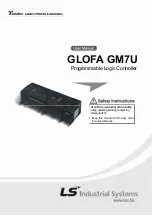
L830-EA M.2 Module Hardware User Manual
Page 44 of 45
7.5 Antenna Design
7.5.1 Main Antenna Design Requirements
(1) Antenna efficiency
Antenna efficiency is the ratio of the input power and radiant power. Because of the antenna’s return loss,
material loss and coupling loss, the radiant power is always lower than the input power. The ratio is
recommended to be > 40% (–4dB).
(2) S11 or VSWR
S11 shows the matching degree of the antenna’s 50 ohm impedance, which affects antenna efficiency to
a certain extent. It is feasible to use VSWR testing method to measure the index. It is recommended that
S11 < –10dB.
(3) Polarization
Polarization is the rotation direction of the electric field of the antenna at the direction of the largest
radiation.
It is recommended to use linear polarization; for diversity antenna, it is recommended to use different
polarization directions from that of the main antenna.
(4) Radiation pattern
Radiation pattern refers to the electromagnetic field intensity at various directions in the far field of the
antenna. Half-wave doublet antenna is the perfect terminal antenna. In the case of built-in antenna, it is
recommended to use PIFA.
Antenna area: H 6mm * W 10mm * L 100mm. It is recommended to use PIFA or IFA.
Antenna radiation direction: Omni-directional.
(5) Gain and directivity
Antenna directivity refers to the electromagnetic field intensity at various directions of the electromagnetic
wave. Gain is the combination of the antenna efficiency and antenna directivity. It is recommended that
antenna gain ≤ 3dBi.
(6) Interference
In addition to antenna performance, other interference from the PCB will also affect the module
performance. In order to ensure the high performance of the module, the interference must be under
control. Suggestions: keep speaker, LCD, CPU, FPC wiring, audio circuit, and power supply away from
the antenna; add appropriate separation and shielding devices, or conduct filtering on the path.
(7) TRP/TIS


































